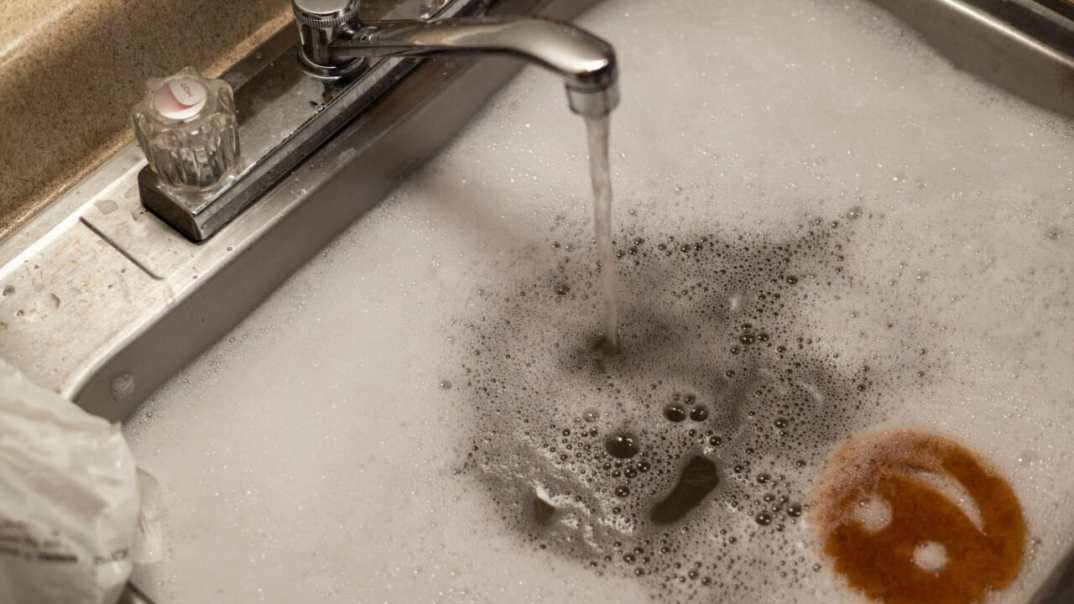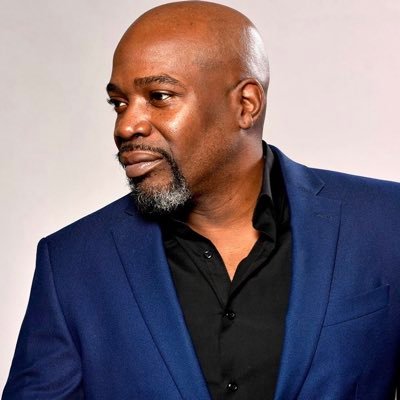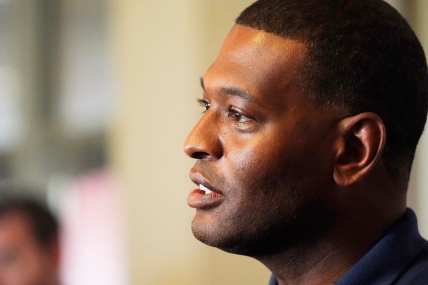White Water Welfare: Jackson, Baltimore and the other racial wealth gap
OPINION: The water crises plaguing Black communities are less about poverty, infrastructure or municipal ineptitude than they are about Black taxpayers subsidizing white wealth.

OPINION: The water crises plaguing Black communities are less about poverty, infrastructure or municipal ineptitude than they are about Black taxpayers subsidizing white wealth.
Editor’s note: The following article is an op-ed, and the views expressed are the author’s own. Read more opinions on theGrio
It’s Baltimore’s turn.
Now that the residents of Jackson, Miss., have water pressure after residents of the city spent days without service, the city of Baltimore is experiencing its own water crisis. Late Wednesday night, the city’s Department of Public Works finally lifted an order to boil water that had been in place for three days in parts of West Baltimore and Baltimore County due to an E. coli contamination in the municipal water supply.
Baltimore officials have yet to offer an official explanation on why people who have paid their water bill don’t have water but there are a ton of online articles explaining why Jackson is beleaguered with a water crisis. It’s about white flight. It’s about crumbling infrastructure and the city getting swindled out of millions of dollars. It’s about Mississippi’s legislature being controlled by white lawmakers who refuse to give “free money.”
Clean and safe drinking water isn’t just a natural resource; it’s a commodity that is becoming increasingly valuable in many parts of America. And while the prevailing narrative would lead one to believe that these communities are filled with impoverished Black people who can’t afford the costs of maintaining its infrastructure and paying for water, the truth is, these are just the latest example of a crisis facing Black communities across America.
To understand what happened in Jackson and Baltimore and what is going on in majority-Black cities across America that don’t have access to the most abundant liquid on Earth, we must first stop trying to fix this with “thought and prayers.” It is not even about money or resources. It’s about theft. It’s about economics. It’s about white privilege and economic inequality.
It’s about welfare for white people.
Poor Jackson?
According to the prevailing narrative, the environmental racism that prevents majority-Black cities like Flint, Mich., Baltimore and Jackson is caused by poverty or lack of resources.
In Baltimore, the E. coli contamination covers about 1,500 homes, schools and businesses in a 56-block area where residents earn about half the city’s overall median income. According to the Census Bureau, more than a third of Flint’s residents live in poverty and Jackson’s water crisis happened in the Blackest city in the poorest and Blackest state in America.
But Mississippi also has the seventh-highest white poverty rate in the country and compared to the rest of the state, Jackson isn’t that poor. Jackson has the lowest unemployment rate in the state, and residents tend to be more educated and less impoverished than the average Mississippian. In fact, in 2020, people who lived in the county where Jackson is located earned a higher per capita income than the state average, which begs the question:
Why does everyone else in Mississippi have water?
To answer this question, you need to know three facts:
- The people who control the money are white: While Mississippi is about 58 percent white and 38 percent Black, its legislature is 71 percent white and 29 percent Black. Despite the state having the highest Black voter registration and participation rates in America, a Black person has not been elected to statewide office in the 140 years since Reconstruction.
- They pay more money: The average Black taxpayer pays higher property taxes while contributing larger shares of their income to state and federal taxes and in Jackson, things are no different. The city’s residents make up about 5.6 percent of the state’s population but generated 7.7 percent of the state’s 2019 sales tax revenue—a figure that increased in 2020. By the way, sales tax is Mississippi’s largest source of income.
- They can’t get their money. In 2022, Mississippi’s revenue from sales tax and income tax increased by 9.5 percent, leaving the state with $1.46 billion in surplus. The increase came after it collected $643 million in revenue in 2020. However, when Jackson applied for an extra $42 million—about 2 percent of the money it contributes to the state—legislators killed the bill. Don’t bet on Jackson receiving its proper share of the $429 billion in forgivable loans and grants that Mississippi is set to receive from the Infrastructure Investment and Jobs Act or the $450 million the state received through the COVID relief packages because both funds are set aside for *checks notes*…water and infrastructure funding.
As you can see, Jackson produces a disproportionate share of the state’s income but gets less in return. The same is true for Baltimore, a city that represents 9.3 percent of Maryland’s population but only received 6.6 percent of state-administered dollars in 2021 and 8.88 percent of federal spending in the state. And while Jackson and Baltimore aren’t the most impoverished cities in their respective states, those other poorer cities are majority white with clean drinking water and no worries about how they will wash their legs or wet their bath cloths (OK, maybe this is a bad example).
The racial water gap
These are only two instances of a problem that overflows the boundaries of poverty, economics and environmental justice. The water crisis is essentially a crisis of life, liberty and the pursuit of cleanliness. Sixty-three percent of Black people say the safety of their community’s drinking water is at least a “moderate problem,” compared with 33 percent of white Americans, while an AP poll found that “whites (54 percent) are significantly more likely than Blacks (40 percent) or Hispanics (28 percent) to be very confident in their tap water being safe.”
In fact, a national data analysis by the US Water Alliance and Dig Deep reports that poverty and municipal infrastructure is not the most important factor in determining which communities have access to the most important natural resource, noting that “race is the strongest predictor of water and sanitation access.” In Chicago, people who live in Black and Hispanic neighborhoods pay more to use less water than whites. The NAACP Legal Defense fund found that most water liens placed on homes in Cuyahoga County, Ohio, are located in majority-Black neighborhoods.
Access to clean water also affects nutrition, schools and economic development. It increases the spread of communicable diseases like COVID and household budgets. It exacerbates poverty and price gouging. It is not just a health issue, it is a wealth issue.
No one is suggesting that Black people who live in Black neighborhoods should receive free water or that municipal ineptitude and lack of infrastructure didn’t help create these crises. But this is a problem that only the government can fix. It’s why we pay taxes. And, of course, we need to address poverty and infrastructure in Black neighborhoods. But ask yourself:
Who created “Black neighborhoods”?
Maybe it’s in the water.

Michael Harriot is a writer, cultural critic and championship-level Spades player. His book, Black AF History: The Unwhitewashed Story of America, will be released in 2022.
TheGrio is FREE on your TV via Apple TV, Amazon Fire, Roku, and Android TV. Please download theGrio mobile apps today!


